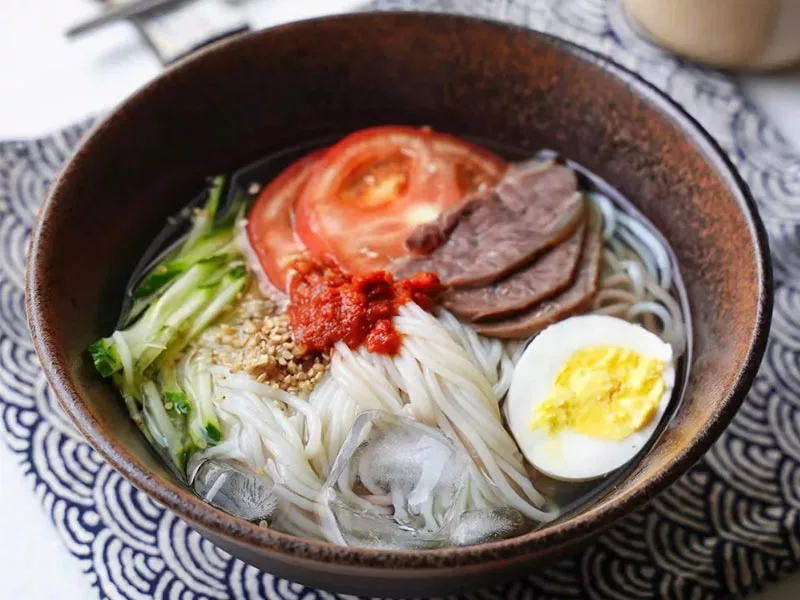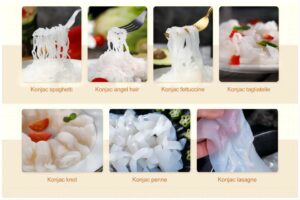The kinds of Chinese noodles are incredible, each boasting its own unique set of characteristics and flavor profiles.
From the thin, delicate strands of vermicelli to the chewy, thick udon noodles, there is truly something for everyone when it comes to Chinese noodle dishes.
Whether you prefer your noodles stir-fried with vegetables, tossed in a spicy sauce, or served in a hearty soup, you’ll find that each type of noodle brings its own distinct texture and taste to the table.
Some of the most popular noodle dishes in China include Vermicelli, hand-rolled noodles, Ramen, and Konjac noodles, each of which showcases the versatility and richness of Chinese cuisine.
List of delicious noodles from China
1. Vermicelli (Guàmiàn)
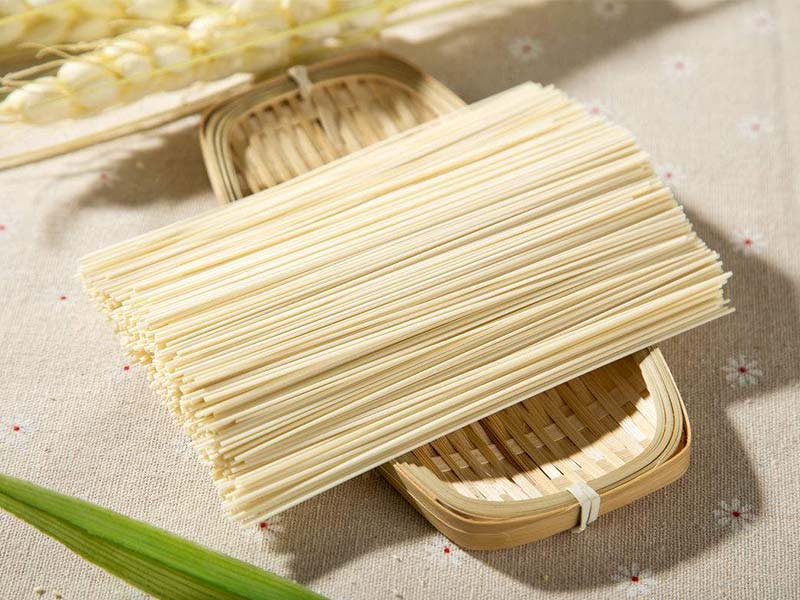 Vermicelli
Vermicelli
Guàmiàn, also known as “hanging noodles” or “suspended noodles,” is a popular type of Chinese noodle. Typically made from wheat flour, salt, and water, it possesses a long and thin shape that characterizes it. The name “Guàmiàn” comes from the traditional method of drying the noodles by hanging them up to dry, hence the term “hanging noodles.”
Texture: Guàmiàn has a smooth and elastic texture when cooked. The noodles are firm and chewy, holding them well in various dishes.
To prepare Guàmiàn, one typically boils or steams the dried noodles until they reach the desired tenderness. The cooking time can vary depending on the thickness of the noodles and personal preference.
Regional Variations: Guàmiàn is consumed throughout China, but different regions may have their variations and ways of serving it. For example, in the northern regions of China, Guàmiàn is often served with a rich and hearty soup broth, while in southern China, it may be stir-fried with vegetables and meat.
Health Benefits: Guàmiàn made from wheat flour is a good source of carbohydrates and provides energy. It also contains some essential vitamins and minerals. However, it is important to note that Guàmiàn, like other noodle dishes, should be consumed in moderation as part of a balanced diet.
Watch this video: Chinese Wheat Vermicelli Recipe
2. Instant Noodles
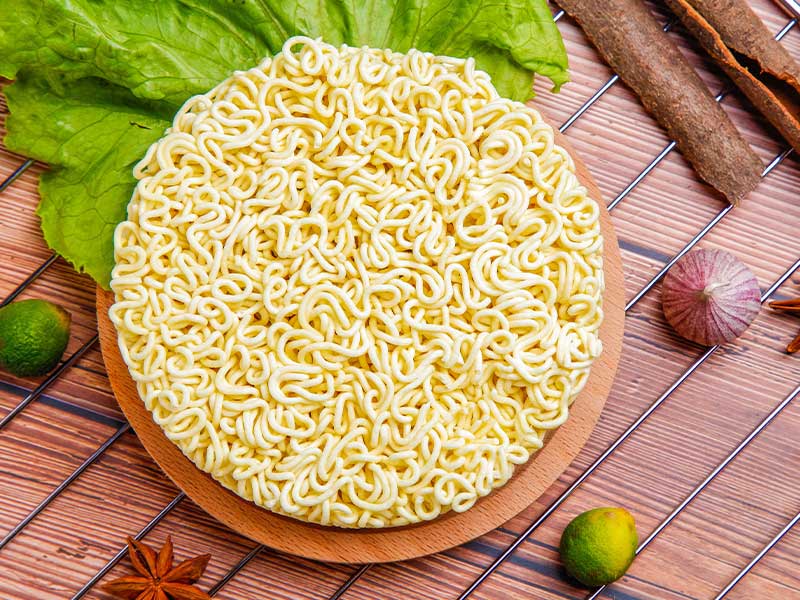 Instant noodles
Instant noodles
Instant noodles are pre-cooked and dried noodles that have been pre-seasoned and packaged for quick and convenient preparation. They have become a popular food choice worldwide due to their ease of cooking, affordability, and wide range of flavors.
Varieties: Instant noodles come in a wide variety of flavors and styles, catering to different tastes and preferences. Common flavors include chicken, beef, shrimp, vegetables, curry, and spicy variations. Additionally, there are regional and international variations of instant noodles, such as Korean ramen, Japanese udon, and Thai tom yum.
Convenience: Instant noodles are popular for their convenience. They require minimal cooking skills and equipment, making them suitable for quick meals or when you’re on the go. Instant noodles are often associated with college students, office workers, and individuals looking for a quick and easy meal option.
Global Popularity: Instant noodles have gained widespread popularity around the world. They originated in Japan in the mid-20th century and have since become a staple food in many Asian countries. Instant noodle brands from Japan, South Korea, China, and other countries have expanded their reach globally, making them easily accessible in supermarkets and grocery stores worldwide.
Despite some nutritional concerns, instant noodles remain a popular and accessible food choice for many people around the world. They offer a quick and satisfying meal option, especially in situations where time and resources are limited. However, it is advisable to consume them in moderation as part of a balanced diet and to opt for healthier varieties when possible.
3. Multigrain noodles (Whole Grain Noodles)
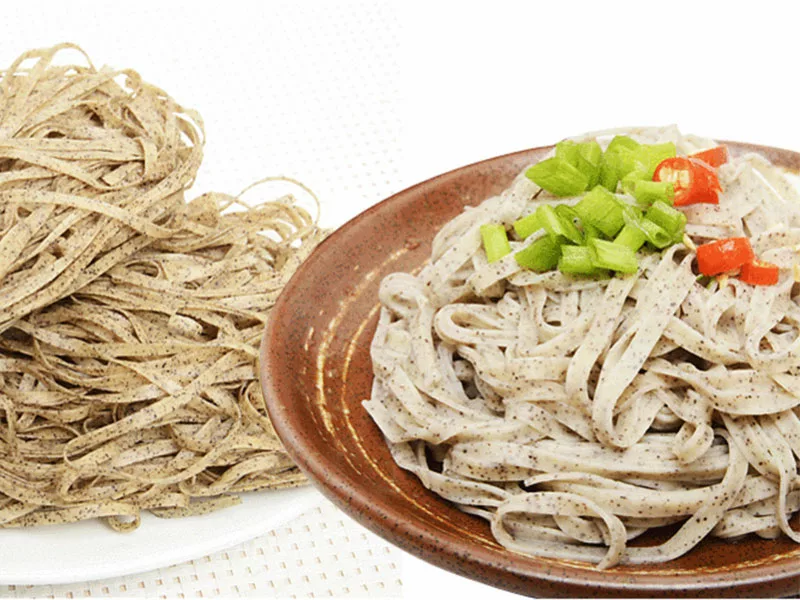 Multigrain noodles
Multigrain noodles
Multigrain noodles are a type of noodle made from a mixture of whole grains and wheat flour. Unlike traditional noodles made solely from refined wheat flour, whole-grain noodles provide higher nutritional value due to the inclusion of various grains such as rice, corn, barley, oats, and millet. These noodles have gained popularity in recent years due to their health benefits and the growing interest in whole-grain foods.
Nutritional Benefits: Whole grain noodles are considered more nutritious compared to regular refined flour noodles. They retain the natural fiber, vitamins, minerals, and antioxidants present in the whole grains used in their production. The inclusion of whole grains can provide additional nutrients such as dietary fiber, B vitamins, vitamin E, minerals like magnesium and zinc, and phytochemicals.
Fiber Content: Whole-grain noodles are a good source of dietary fiber. Fiber is essential for digestive health, promoting regular bowel movements, and helping to control blood sugar levels. The fiber content in whole grain noodles can vary depending on the specific grains used, but as a general rule, they contain more fiber than their refined flour counterparts.
Lower Glycemic Index: Whole-grain noodles typically have a lower glycemic index compared to noodles made from refined wheat flour. The glycemic index measures how quickly a carbohydrate-containing food raises blood sugar levels. Foods with a lower glycemic index are digested more slowly, resulting in a slower and steadier release of glucose into the bloodstream. This can be beneficial for managing blood sugar levels and providing sustained energy.
Whole grain noodles offer a healthier alternative to traditional refined flour noodles. They provide higher nutritional value, particularly in terms of fiber content and essential nutrients from whole grains. Incorporating whole-grain noodles into your diet can be a nutritious choice, supporting digestive health and providing sustained energy.
4. Hand-pulled Noodles
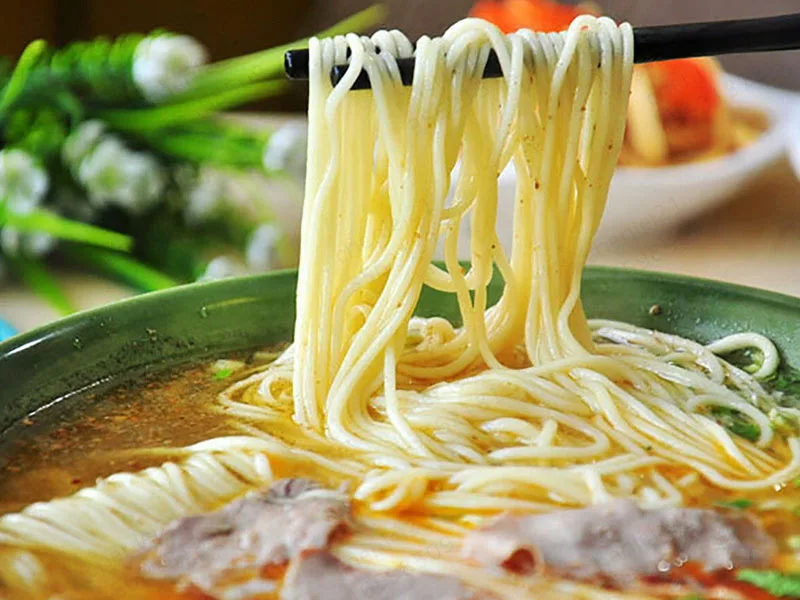 Hand-pulled Noodles
Hand-pulled Noodles
To make hand-pulled noodles, one repeatedly pulls and stretches the dough by hand, resulting in a unique type of noodle. This technique gives the noodles their distinctive texture and chewiness. Hand-pulled noodles have a long history in Chinese cuisine and are highly regarded for their skillful preparation and unique taste.
Technique: To make hand-pulled noodles, people knead a dough mixture typically composed of wheat flour, salt, and water. This process helps align the gluten strands in the dough, creating the desired texture of the noodles.
Texture: Hand-pulled noodles have a chewy and springy texture that sets them apart from other types of noodles. The repeated stretching and folding of the dough develop gluten, resulting in a noodle that is both tender and resilient when cooked.
Thickness and Width: Hand-pulled noodles can vary in thickness and width, depending on personal preference and regional styles. They can be thin and delicate or wider and more substantial. The width and thickness of the noodles can affect the cooking time and the way they absorb sauces and flavors.
Regional Variations: Hand-pulled noodles are popular throughout China, and different regions have their own variations and styles. For example, Lanzhou-style hand-pulled noodles, known as “Lamian,” are well-known and originated from the city of Lanzhou in Northwestern China. People often serve these noodles in a savory beef broth with a variety of toppings. Other regions, such as Shaanxi and Shanxi, also have distinct styles of hand-pulled noodles with unique flavors and preparations.
Hand-pulled noodles are a beloved culinary treasure in Chinese cuisine. The combination of skillful hand-pulling techniques and the resulting chewy texture makes them a delightful and satisfying noodle choice. Whether enjoyed in a simple broth or dressed with flavorful sauces, hand-pulled noodles offer a memorable dining experience.
Watch this video: Homestyle Hand-pulled Noodles, Easy and Delicious!!!
5. Quick-cook Noodles
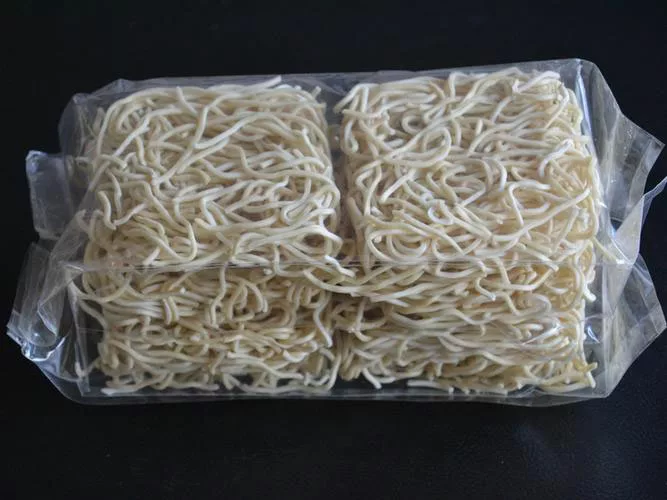 Quick-cook noodles
Quick-cook noodles
Quick-cook noodles are a type of instant noodles that people design to cook quickly and easily.
They are a popular convenience food in many Asian countries and have gained widespread popularity due to their ease of preparation and versatility.
Instant Preparation: Quick-cooked noodles are pre-cooked and dehydrated noodles that are packaged with a seasoning packet or sachet. They are designed to be cooked rapidly by simply immersing them in boiling water for a short period, typically ranging from 2 to 5 minutes. The quick cooking time makes them a convenient option for those looking for a fast and easy meal.
Versatility: Quick-cook noodles come in various flavors and styles, offering a wide range of options to suit different tastes and preferences. Common flavors include chicken, beef, seafood, vegetables, and spicy variations. Some brands also offer vegetarian or vegan options. Additionally, quick-cook noodles can be customized by adding ingredients such as vegetables, eggs, meat, or tofu to enhance the flavor and nutrition of the dish.
Quick-cook noodles are a popular type of instant noodles known for their quick preparation and convenience. Many people enjoy quick-cooked noodles as a fast and easy meal option due to their availability in various flavors. However, it’s important to be mindful of their nutritional content and consume them in moderation as part of a balanced diet.
6. Butterfly Noodles
 Butterfly Noodles
Butterfly Noodles
Butterfly Noodles are a type of Chinese noodle dish. The name “Butterfly Noodles” refers to the shape of the noodles, which resemble butterfly wings when cooked. These noodles are thin, flat, and often slightly curved, resembling the delicate wings of a butterfly.
Shape and Texture: People typically make Butterfly Noodles from wheat flour, water, and sometimes eggs. One rolls out the dough into thin sheets, cuts it into long, flat strips, and then cooks them to make Butterfly Noodles. When cooked, the noodles become soft and slightly chewy. The unique shape and texture of Butterfly Noodles make them visually appealing and enjoyable to eat.
Versatility: Butterfly Noodles have multiple uses and people can use them in various dishes. They are commonly used in stir-fries, soups, and cold noodle salads. The flat shape of the noodles allows them to absorb sauces and flavors well, making them suitable for a range of ingredients and seasonings.
Regional Variations: Butterfly Noodles are popular in various regions of China, and different areas may have their own variations and preparations. For example, in Sichuan cuisine, there is a dish called “Ants Climbing a Tree“, which features stir-fried Butterfly Noodles with ground pork or beef and spicy seasonings. In other regions, people may serve Butterfly Noodles with a lighter broth or incorporate them into cold noodle salads.
It’s worth noting that the term “Butterfly Noodles” may not be universally recognized, and the name or preparation of these noodles may vary in different regions or localities.
Overall, Butterfly Noodles are a visually appealing and versatile type of Chinese noodle. Their delicate shape, combined with their chewy texture, makes them a delightful addition to various dishes in Chinese cuisine.
Watch this video: Homemade Farfalle from Scratch | Butterfly pasta
7. Hand-rolled Noodles
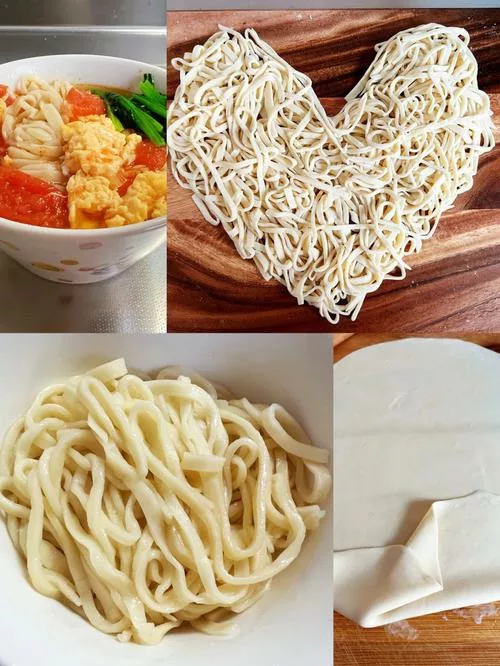 Hand-rolled noodles
Hand-rolled noodles
Hand-rolled noodles are a type of noodle made by manually rolling out and stretching the dough. This traditional method involves using hands and a rolling pin to create long, thin strands of noodles. Hand-rolled noodles are popular in many regions of China and are highly regarded for their texture and taste.
Homemade Tradition: Hand-rolled noodles have a long history and are deeply rooted in Chinese culinary traditions. People often associate hand-rolled noodles with homemade cooking and consider them a labor-intensive, artisanal process. Making hand-rolled noodles requires skill and practice to achieve the desired consistency and thickness.
Dough Preparation: Typically, one makes the dough for hand-rolled noodles using wheat flour, water, and sometimes eggs. The ingredients are mixed to form a pliable dough. Then, one kneads the dough to develop gluten and elasticity, which contributes to the chewy texture of the noodles.
Rolling and Stretching: After preparing the dough, people divide it into smaller portions for ease of handling. Using a rolling pin, one rolls out each portion of the dough into a thin sheet. One then folds and rolls the sheet of dough multiple times to develop the desired thickness and texture. Finally, people cut the dough into long, thin strips, forming the hand-rolled noodles.
Texture and Thickness: Hand-rolled noodles have a unique texture that sets them apart from other types of noodles. They are typically chewy, with a satisfying bite. The thickness of hand-rolled noodles can vary depending on personal preference and regional variations. Some prefer thinner noodles, while others prefer slightly thicker ones.
Cooking Methods: Depending on the dish, people can cook hand-rolled noodles in various ways. One common method involves boiling them in water until they reach the desired tenderness. The cooking time for hand-rolled noodles is relatively short, usually just a few minutes. After boiling, people typically rinse the noodles with cold water to remove excess starch and prevent sticking.
Regional Variations: Hand-rolled noodles have regional variations in China, with different areas having their own unique styles and recipes. For example, in Shanxi province, you can find “Biang Biang Noodles,” which are wide, hand-rolled noodles often served with a spicy sauce and various toppings. In Lanzhou, “Lanzhou hand-pulled noodles” are a popular variation, where the dough is stretched and pulled by hand to create long, thin noodles.
People cherish hand-rolled noodles for their homemade quality, unique texture, and the skill required to make them. Hand-rolled noodles are a beloved staple in Chinese cuisine and people worldwide continue to enjoy them both in households and restaurants.
Watch this video: The Art Of Making Noodles By Hand
8. Fresh Noodles
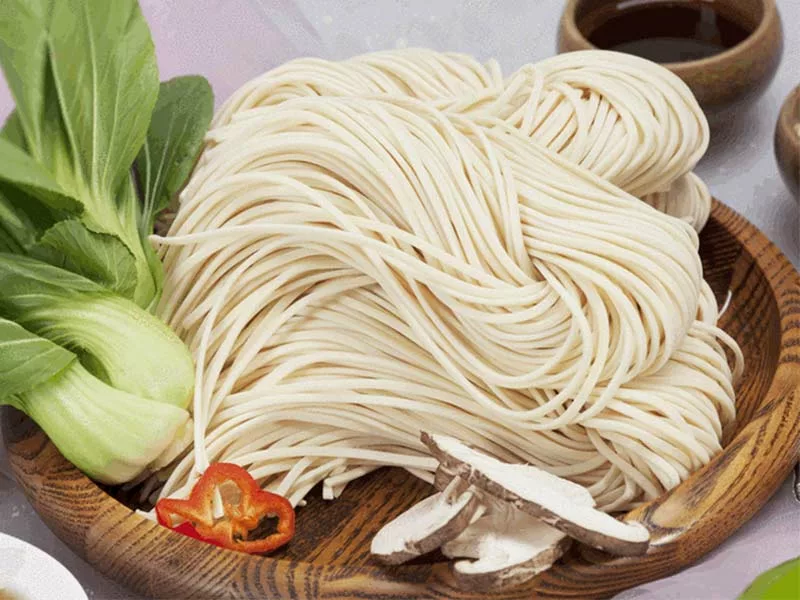 Fresh Noodles
Fresh Noodles
People make fresh noodles from scratch using fresh ingredients, distinguishing them from dehydrated and packaged dried or instant noodles. Fresh noodles are produced and consumed in their uncooked state, and they are highly regarded for their superior texture, flavor, and quality compared to pre-packaged alternatives.
Production: To make fresh noodles, people typically combine flour, water, and sometimes eggs to create a dough. They knead the dough to develop gluten and elasticity, which contributes to the chewy texture of the noodles. The next step involves rolling out the dough and cutting it into the desired shape and thickness. People often carry out the entire production process of fresh noodles manually or with the assistance of specialized noodle-making equipment.
Variety: Fresh noodles come in various shapes, sizes, and styles, catering to different culinary preferences and regional cuisines. Common types of fresh noodles include wheat noodles, egg noodles, rice noodles, udon noodles, and soba noodles. Each type of fresh noodle possesses its own unique characteristics and finds utilization in specific dishes.
Texture and Taste: Fresh noodles are highly prized for their superior texture and taste. They have a chewy and springy texture, often referred to as “QQ” in Chinese culinary terms. This desirable texture is a result of the high moisture content and freshness of the noodles. Fresh noodles also have a distinct, delicate flavor that enhances the overall enjoyment of a dish.
People highly value fresh noodles for their superior taste, texture, and authenticity. They offer a delightful and satisfying experience when used in various Asian dishes. Their freshness and high quality make them a preferred choice for those seeking an elevated noodle experience.
9. Semi-dry Noodles
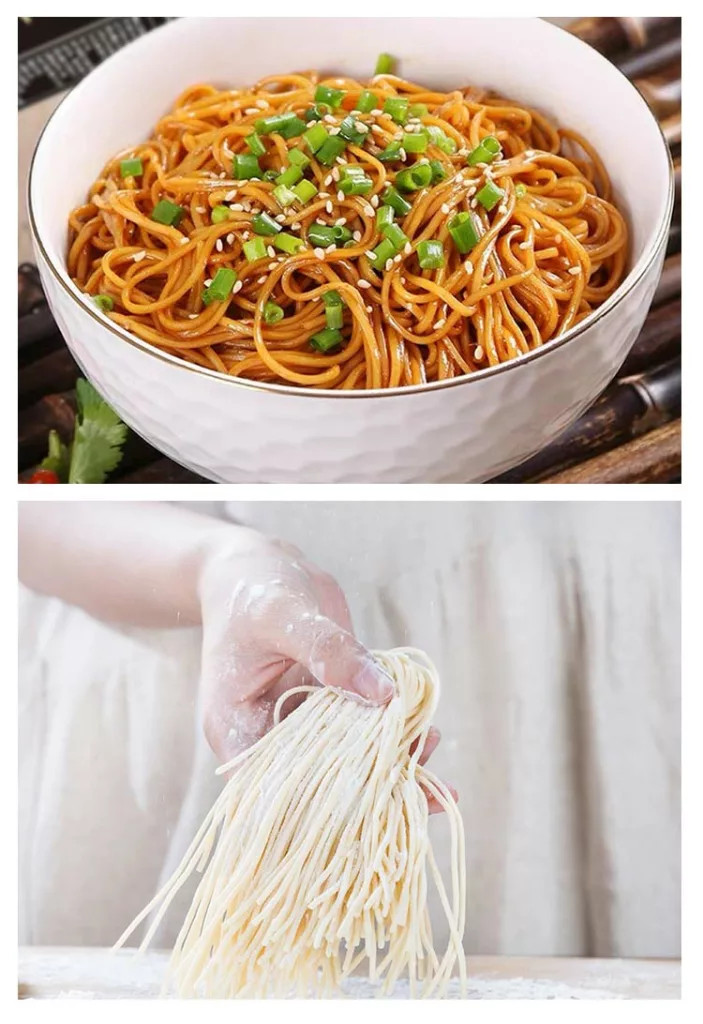
Semi-dry Noodles
Semi-dry noodles are a type of noodle dish that falls between dry noodles and soup noodles. They are a popular variation in Chinese cuisine, particularly in regions like Sichuan and Chongqing. Semi-dry noodles are characterized by their moderate level of sauce or broth, which coats the noodles without fully submerging them.
Preparation: People typically make semi-dry noodles with wheat flour, water, and sometimes alkaline water or eggs. They knead the dough, roll it out, and cut it into thin noodle strands. Cook the noodles by boiling them in water until they reach the desired tenderness. After boiling, people drain and rinse the noodles with cold water to remove excess starch and halt the cooking process.
Sauce or Broth: The distinguishing characteristic of semi-dry noodles is the moderate amount of sauce or broth that is mixed with the noodles. This sauce or broth is often rich in flavor and varies depending on regional and personal preferences. It can be a combination of soy sauce, vinegar, chili oil, sesame paste, and other seasonings. Usually, people pour the sauce or broth over the cooked noodles and mix them well to ensure even distribution.
Toppings and Accompaniments: Semi-dry noodles are commonly served with various toppings and accompaniments to enhance the flavor and texture. Popular toppings may include sliced meat (such as pork, beef, or chicken), minced meat, vegetables (like bok choy or bean sprouts), and herbs. Additional condiments like pickled vegetables, chili sauce, or crushed peanuts are often provided on the side for diners to customize their bowl of noodles.
Regional Variations: Semi-dry noodles have regional variations across China. For example, in Sichuan cuisine, “Dan Dan Noodles” is a famous variation of semi-dry noodles. One characterizes them by a spicy, numbing sauce made with Sichuan peppercorns, chili oil, and minced meat. In Chongqing, a popular version called “Chongqing Noodles” features a spicy and savory sauce with pickled mustard greens and ground meat.
Semi-dry noodles offer a unique balance between dry noodles and soup noodles, providing a flavorful and satisfying eating experience. They are a popular choice for those who enjoy the combination of saucy noodles with a variety of toppings and condiments.
Watch this video: Chinese Dry Chilli Garlic Noodles Recipe
10. Alkaline Noodles
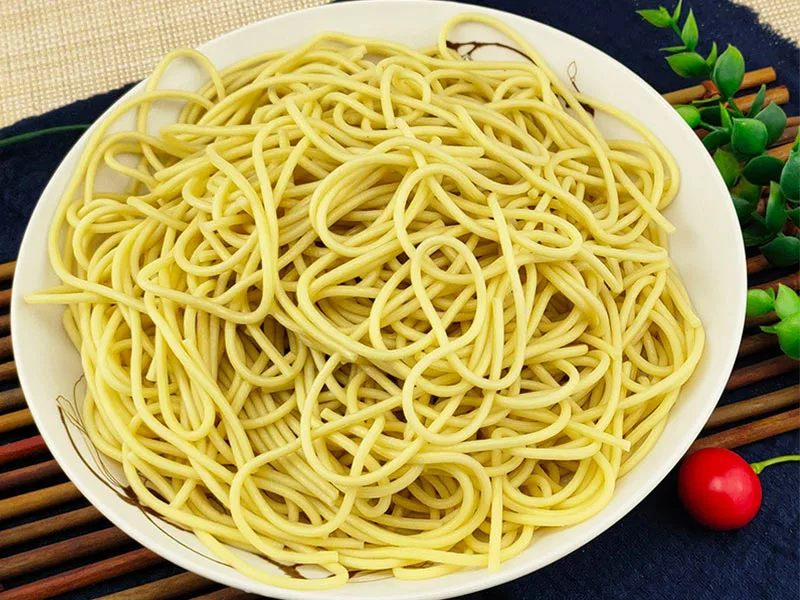 Alkaline Noodles
Alkaline Noodles
Alkaline noodles are a type of noodle that is characterized by the addition of alkaline water or lye water to the dough. This alkaline solution gives the noodles a unique yellow color, springy texture, and distinctive flavor. People commonly use alkaline noodles in various Asian cuisines, including Chinese, Japanese, and Southeast Asian dishes.
Alkaline Solution: The alkaline component in alkaline noodles is typically achieved by adding alkaline water or lye water to the noodle dough. Alkaline water is made by dissolving baking soda (sodium bicarbonate) in water, while lye water is a solution of potassium carbonate and sodium bicarbonate. The alkaline solution raises the pH level of the dough, resulting in a different texture and flavor.
Texture and Springiness: Alkaline noodles have a unique texture that sets them apart from other types of noodles. The alkaline solution alters the protein structure in the dough, resulting in a more elastic and springy texture. This gives the noodles a satisfying chewiness and resilience when cooked.
Yellow Color: One of the distinct characteristics of alkaline noodles is their yellow color. The alkaline solution reacts with the proteins in the dough, causing a chemical reaction known as the Maillard reaction. This reaction gives the noodles a yellowish hue, ranging from pale yellow to a deeper golden color, depending on the concentration of the alkaline solution.
Flavor: Alkaline noodles have a slightly different flavor compared to regular wheat noodles. The alkaline solution imparts a subtle, unique taste often described as “eggy” or “mineral-like.” This flavor enhances the overall taste of the dish and pairs well with various sauces and ingredients.
Culinary Applications: Alkaline noodles are used in a wide range of dishes in Asian cuisines. In Chinese cuisine, they are commonly used in stir-fries, soups, and noodle dishes such as “Hong Kong-style wonton noodles” or “Singapore-style fried noodles.” In Japanese cuisine, alkaline noodles are known as “ramen” and are a key component of popular ramen dishes.
Health Considerations: It’s worth noting that the consumption of alkaline noodles should be in moderation due to their higher pH level. Excessive intake may disrupt the natural balance of acidity in the body. As with any food, it’s important to enjoy alkaline noodles as part of a varied and balanced diet.
Alkaline noodles offer a distinct texture, color, and flavor profile that make them a popular choice in many Asian dishes. Whether enjoyed in a comforting bowl of ramen or stir-fried with an array of ingredients, alkaline noodles add a unique culinary experience to various cuisines.
11. Udon Noodles
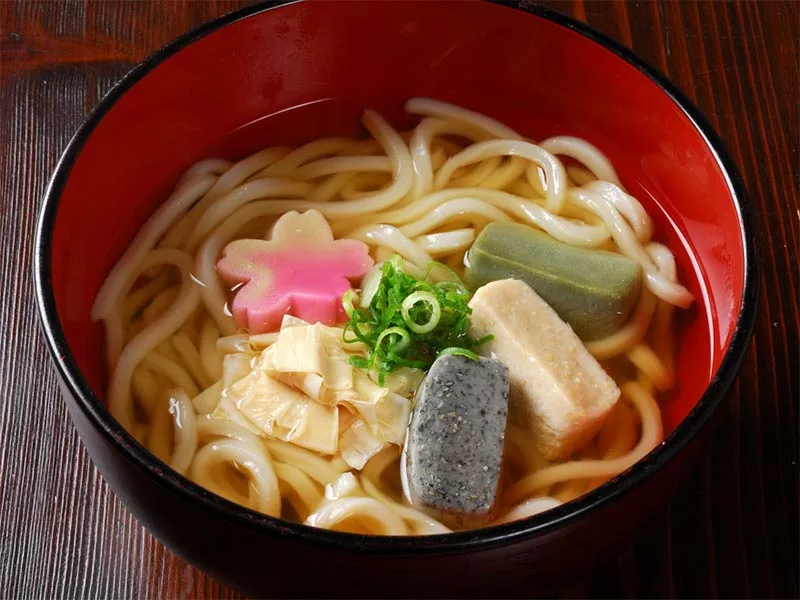 Udon Noodles
Udon Noodles
Udon noodles are thick, chewy wheat noodles that are a staple in Japanese cuisine. They are one of the most popular and widely consumed types of noodles in Japan and have gained popularity worldwide. Udon noodles are renowned for their smooth texture and their ability to absorb flavors from the broth or sauces in which people cook them.
Production: People make udon noodles from a simple combination of wheat flour, salt, and water. They knead the dough until it becomes smooth and elastic. Then, they roll out the dough and cut it into thick, flat noodles. Traditional udon noodles are often handmade, but commercially produced udon noodles are widely available.
Thickness and Texture: Udon noodles are thick and have a chewy texture, which sets them apart from other types of noodles. The thickness can vary, but they are generally thicker than soba noodles and ramen noodles. People highly value the chewiness of udon noodles, often describing it as “al dente,” which provides a satisfying mouthfeel.
Culinary Applications: Udon noodles are incredibly versatile and used in a wide range of dishes in Japanese cuisine. One of the most popular preparations is “Kake Udon,” where the noodles are served in a simple soy-based broth with various toppings such as green onions, tempura, or kamaboko (fish cake). People commonly use udon noodles in stir-fries, hot pots, and noodle salads. Additionally, they enjoy them with different types of sauces, including curry, miso, or teriyaki.
Regional Variations: Udon noodles have regional variations in Japan. For example, Sanuki udon, from the Kagawa Prefecture, is particularly renowned for its chewy texture. It is often served with a soy-based dipping sauce called tsuyu. Other regional variations include Kansai-style udon and Kanto-style udon, each with its own unique characteristics and preparation methods.
Udon noodles are beloved for their thick, chewy texture and their ability to absorb flavors. They are versatile ingredients that can be enjoyed in a variety of dishes, from comforting soups to stir-fries and cold salads. Whether you prefer a traditional preparation or a creative fusion, udon noodles are a delicious and satisfying choice.
Watch this video: A Brief Introduction to Udon Noodles
12. Southern-style Hand-pressed Noodles
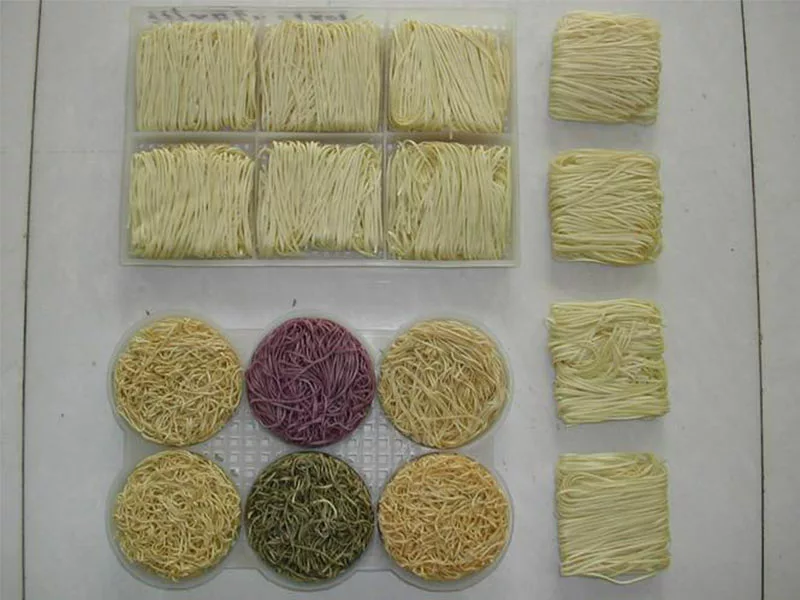 Southern-style Hand-pressed Noodles
Southern-style Hand-pressed Noodles
Southern-style hand-pressed noodles are a type of fresh noodle that is popular in southern regions of China, particularly in provinces like Guangdong, Fujian, and Guangxi. People make these noodles by hand, employing a unique technique of kneading and stretching the dough to create thin, wide noodles with irregular edges. People know these noodles for their silky texture and their ability to absorb flavors from sauces and broths.
Hand-Pressed Technique: Southern-style hand-pressed noodles have a distinctive feature: the method used to make them.
The dough for these noodles consists of a combination of wheat flour, water, and sometimes alkaline water or eggs.
After kneading the dough until it becomes smooth and elastic, small pieces of dough are taken and rolled into thin sheets.
Then, these sheets are pressed and stretched by hand to create long, wide noodles.
It is this technique that imparts the noodles with their unique texture and shape.
Texture: Southern-style hand-pressed noodles have a smooth and silky texture. The hand-pulling process creates a noodle that is both tender and chewy. This texture allows the noodles to absorb sauces and broths well, enhancing the overall flavor of the dish.
Width and Thickness: Hand-pressed noodles are wider and thicker compared to other types of noodles. The width can vary, but they are generally broader than traditional wheat or egg noodles. The thickness of the noodles also contributes to their chewy texture and ability to hold up well in different cooking methods.
Regional Variations: Southern-style hand-pressed noodles have regional variations within southern China. Each region may have its own unique way of preparing the noodles and serving them with specific toppings and sauces. For example, in Guangxi, Guilin rice noodles are a famous variation, served with a rich and spicy broth, pickled vegetables, and various toppings.
Freshness: People typically make hand-pressed noodles fresh and consume them soon after preparation. The freshness and handmade quality of these noodles are highly valued, as they contribute to their superior texture and taste.
While they can be made at home, they are also available at local noodle shops and restaurants specializing in southern Chinese cuisine.
13. He La Noodles
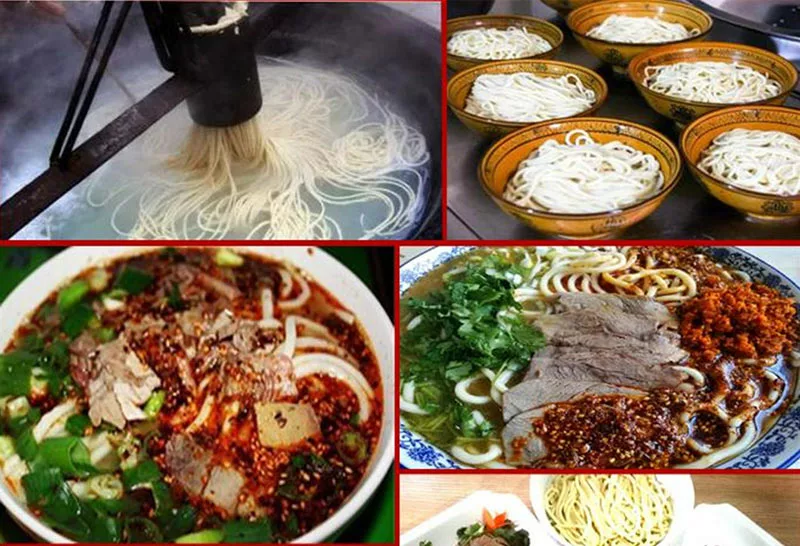 He La Noodles
He La Noodles
He La noodles, known as “饸烙面” (hé lào miàn) in Chinese, are a type of hand-pulled noodle that originated from the Shanxi province in northern China. These noodles are characterized by their irregular, flat shape and chewy texture. He La noodles are made by pulling and stretching the dough to create thin, wide noodles that are then pan-fried to achieve a slightly crispy exterior.
Dough Preparation: To make He La noodles, people combine wheat flour, water, and sometimes salt or alkaline water to create the dough. They then knead the ingredients until a smooth and elastic dough is formed. After that, the dough is allowed to rest before commencing the noodle-making process.
Hand-Pulled Technique: Making He La noodles involves a unique hand-pulled technique. A portion of the dough is taken stretched and pulled repeatedly to create thin, wide noodles. This process requires skill and practice to achieve the desired texture and shape.
Shape and Texture: The La noodles have a flat and irregular shape. They are wider and thicker compared to other types of hand-pulled noodles. The irregular edges and uneven thickness give the noodles a rustic appearance. The texture of He La noodles is chewy, with a slightly crispy exterior from the pan-frying process.
Pan-frying: After pulling and shaping the noodles, people cook them by pan-frying. They heat a large flat griddle or pan and place the noodles on the hot surface. Gently pressing the noodles down ensures contact with the pan, resulting in a crispy exterior while maintaining a chewy interior. The pan-frying process adds a distinct flavor and texture to the noodles.
Regional Significance: People particularly popularize He La noodles in the Shanxi province of China, considering them a local specialty. These noodles serve as a staple in Shanxi cuisine and people can enjoy them in numerous local restaurants and noodle shops. Due to their unique texture and cooking method, He La noodles have gained popularity beyond Shanxi and can now be found in other regions of China as well.
14. Ramen (La Mian)
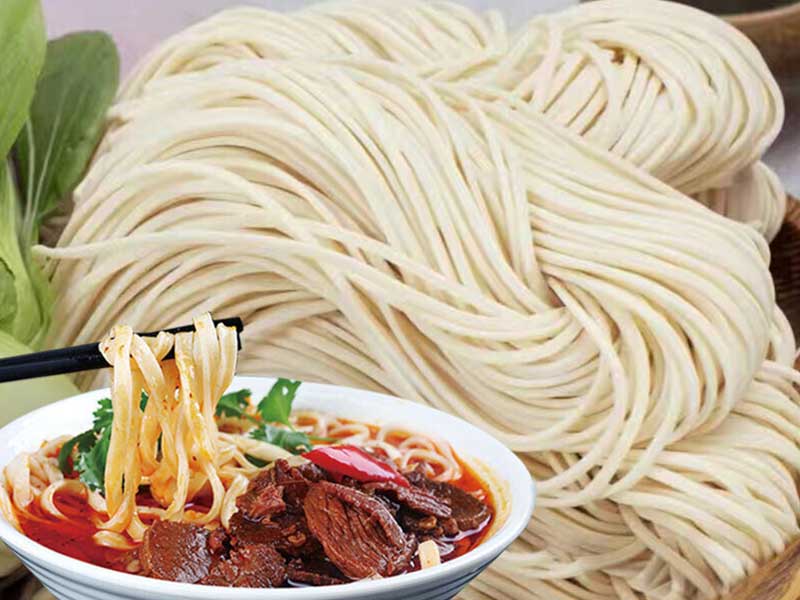 Ramen
Ramen
Ramen is a type of hand-pulled noodle that originated in China and has become popular worldwide. The term “la mian” translates to “pulled noodles,” referring to the method of making the noodles by hand. La Mian noodles are known for their long, thin, and elastic strands, which have a delightful chewy texture.
Hand-Pulled Technique: Ramen is made through a skilled and labor-intensive process of hand-pulling the dough.
The dough for ramen typically consists of wheat flour, water, and sometimes salt or alkaline water.
To begin, the ingredients are kneaded until they form a smooth and elastic dough. Then, the dough is stretched, folded, and pulled repeatedly.
This repetitive motion creates long strands of noodles. Achieving the desired texture and thickness requires dexterity and practice honed over time.
Texture and Appearance: Ramen has a unique texture that is both chewy and springy. The hand-pulling technique gives the noodles a slightly irregular shape, with variations in thickness along the strands. This irregularity helps the noodles to absorb sauces and flavors more effectively. The noodles are usually long and thin, but the thickness can vary depending on the preference of the noodle maker.
Culinary Applications: Ramen is a popular choice in Chinese cuisine and is used in a wide range of dishes. One of the most famous preparations is “Lanzhou Beef Noodles,” which originated in Lanzhou, China. People serve these noodles in a flavorful beef broth with tender beef slices, herbs, and other toppings. Ramen is also a common ingredient in other types of noodle soups, stir-fried dishes, and even hot pots.
Regional Variations: Ramen has regional variations in China, with different regions having their own distinct styles and techniques. For example, people know Lanzhou-style noodles for their hand-pulled technique and often serve them in beef-based soups. Shanxi-style noodles, also known as “Dao Xiao Mian,” are sliced from a dough block directly into the boiling water, resulting in flat, wide noodles. Each regional style brings its own unique flavors and characteristics to the dish.
Worldwide Popularity: La Mian noodles have gained popularity beyond China and can be found in many parts of the world. Noodle shops and restaurants specializing in Chinese cuisine often offer La Mian dishes on their menus. Additionally, La Mian has become a popular street food item in some countries, where chefs demonstrate the skill of hand-pulling the noodles in front of customers.
Ramen is cherished for its handmade quality, chewy texture, and versatility. Whether enjoyed in a comforting bowl of soup or stir-fried to perfection, these noodles provide a delightful culinary experience. The artistry and skill involved in their preparation make them a fascinating and delicious aspect of Chinese cuisine.
Watch this video: How to Make Ramen Noodles
15. Cold Noodles
Cold noodles are a popular dish in various Asian cuisines, particularly in China, Korea, and Japan. As the name suggests, cold noodles are served chilled, making them a refreshing choice, especially during hot summer months. There are different variations of cold noodles across different regions and cultures, each offering its own unique flavors and ingredients.
Noodle Varieties: Cold noodles can be made with different types of noodles, depending on the regional preference and culinary tradition. In China, wheat-based noodles, such as thin wheat noodles or buckwheat noodles, are commonly used. In Korea, noodles made from wheat flour, such as naengmyeon noodles, are popular, while in Japan, soba noodles (made from buckwheat flour) or somen noodles (made from wheat flour) are often used.
Chilled Serving Style: Cold noodles are typically served chilled or at room temperature. After the noodles are cooked, they are immediately cooled down by rinsing them under cold water or placing them in ice water. Chilling the noodles helps to firm them up and gives them a refreshing texture.
Sauce and Seasonings: Cold noodles are commonly served with a flavorful sauce or dressing. The sauce varies depending on the regional cuisine. In China, a popular sauce for cold noodles is a combination of soy sauce, vinegar, sesame oil, garlic, and chili oil, which provides a balance of savory, tangy, and spicy flavors. In Korea, naengmyeon is often served with a tangy and savory beef broth-based sauce, while in Japan, cold soba noodles are typically served with a soy-based dipping sauce called tsuyu.
Toppings and Garnishes: Cold noodles are often garnished with a variety of toppings to add texture, flavor, and visual appeal. Common toppings include julienned cucumbers, shredded chicken or pork, sliced boiled eggs, pickled vegetables, and herbs such as cilantro or green onions. Some variations may also include additional ingredients like kimchi, seaweed, or sesame seeds.
Regional Variations: Cold noodles have regional variations, each with its own distinct characteristics. In China, “Liangpi” is a popular type of cold noodle made from wheat or rice starch, often served with a spicy sauce and various toppings. In Korea, “Naengmyeon” is a traditional cold noodle dish made with buckwheat noodles served in a tangy broth or a spicy sauce. In Japan, “Zaru Soba” refers to cold soba noodles served on a bamboo mat (zaru), accompanied by a dipping sauce.
Popular Side Dishes: Cold noodles are often enjoyed with various side dishes that complement the flavors of the noodles. In China, side dishes like marinated tofu, spicy shredded chicken, or blanched vegetables are commonly served. In Korea, popular side dishes include kimchi, pickled radish, or fried mandu (dumplings). In Japan, side dishes like tempura, tofu, or seaweed salad are often served alongside cold noodles.
16. Konjac Noodles
Konjac noodles, known as “konnyaku noodles,” are a type of noodle made from the konjac plant, a perennial plant native to Southeast Asia. These noodles are popular in various Asian cuisines and are known for their low-calorie and low-carbohydrate content, making them a popular choice for those following special diets or seeking healthier alternatives to traditional noodles.
Konjac Plant: Konjac noodles are made from the root of the konjac plant, also known as Amorphophallus konjac. The plant’s root contains a dietary fiber called glucomannan, which is responsible for the unique texture and health benefits of konjac noodles.
Low-Calorie and Low-Carb: Konjac noodles are extremely low in calories and carbohydrates, making them popular among individuals following low-calorie or low-carb diets. They are particularly suitable for people on diets like keto or those looking to manage their blood sugar levels.
Gelatinous Texture: Konjac noodles have a gelatinous and slightly chewy texture. They are translucent and have a similar appearance to glass noodles or rice vermicelli. The texture of konjac noodles can vary depending on the brand and preparation method.
Neutral Flavor: Konjac noodles have a neutral taste, which makes them versatile for various dishes. They easily absorb the flavors of the sauces, broths, or ingredients they are cooked with, making them a good choice for stir-fries, soups, or noodle salads.
Health Benefits: Konjac noodles are often chosen for their potential health benefits. The primary fiber found in konjac noodles, glucomannan, is known for its ability to absorb water and form a gel-like substance in the digestive system. This can contribute to a feeling of fullness and aid in weight management. Additionally, Konjac noodles are low in fat and cholesterol.
Culinary Uses: People can use konjac noodles as a substitute for traditional noodles in various dishes. They commonly utilize konjac noodles in stir-fries, soups, hot pots, and noodle salads. People cook konjac noodles with vegetables, meats, and sauces to create satisfying and low-calorie meals.
Dietary Considerations: While konjac noodles offer health benefits, it is important to note that they are high in fiber and can cause digestive discomfort or bloating in some individuals, especially when consumed in large amounts. It is advisable to start with small portions and drink plenty of water when consuming konjac noodles.
Konjac noodles provide a unique alternative to traditional noodles, offering a low-calorie and low-carb option with a distinctive texture. Whether you are looking to manage your weight or explore new culinary options, konjac noodles can be a healthy addition to your diet.
These are just some of the many kinds of Chinese noodles available. Each type has its distinct characteristics, making Chinese noodle cuisine diverse and delicious. Whether you prefer them in soups, stir-fries, or cold dishes, Chinese noodles offer a wide range of flavors and textures to satisfy your culinary cravings.

